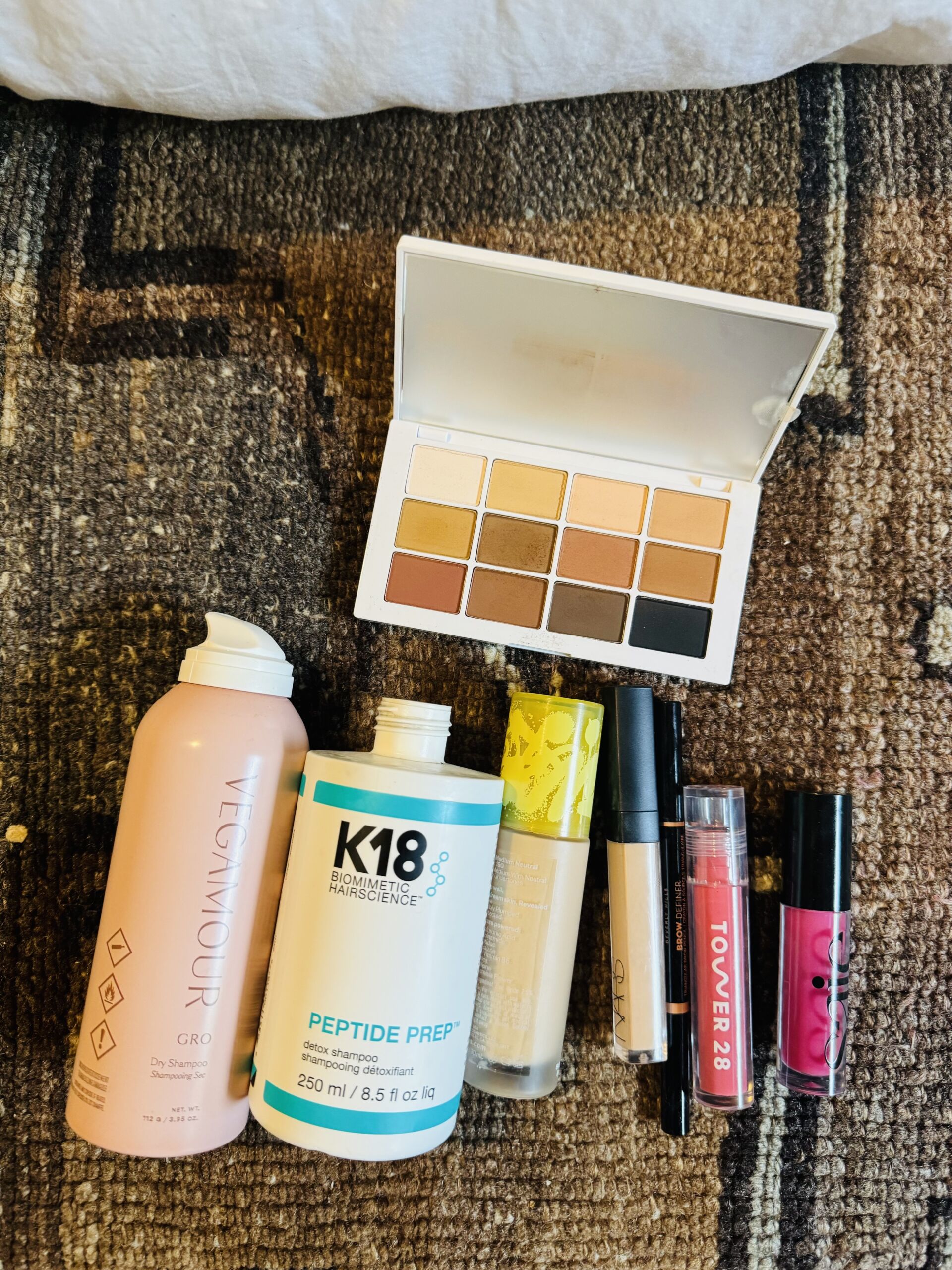This post is brought to you by one of my oldest and dearest friends Melissa Guarnaccia. She and I go way back and she is an absolute delight. She specializes in anxiety and knows I deal with anxiety so we thought this blog post may be helpful for others like me dealing with and navigating anxiety. Melissa recently decided to step down from her role as a school counselor and start her own company that specializes in Telehealth visits (which she had been doing on the side in addition to her school counselor job since 2017). The best part is Melissa is now not only licensed in NC but also SC! I know I often get messages about therapists and I highly recommend Melissa and now you don’t have to live in Charlotte to meet with her you can do it online! Melissa specializes in anxiety, depression and life transitions. She also offers 1:1 parent coaching, using Parenting with Love & Logic, as her foundation. There is a link to her site at the bottom if you want to schedule an appointment with her. I am so proud of her and she is so wonderful at what she does!
I hope ya’ll find this helpful!
Is anxiety normal?
Some anxiety is completely normal! This is a biological response that we have built in as part of being human. Anxiety is not only normal and a part of being human, but it can actually be helpful in many situations. Anxiety can be a motivator and a driver to take action in order to tackle new challenges. However, when anxiety occurs in high and frequent doses it can become problematic and affect our daily functioning. If anxiety is keeping you from moving forward, rather than motivating you, it is time to explore further.
What if I am not sure if I have anxiety or something else?
It is important to understand there are differences between stress, worry and anxiety. Many will use these words interchangeably, but the way in which we attack each one will be different. Stress is typically connected to your “to-do list” or the amount of things on your so-called plate. The primary way to manage stress is to reevaluate and remove things from your plate, as well as utilize stress-reducing coping skills. Worry is different from anxiety as it is more specific and deals with facts. Worry is typically related to a realistic concern such as a blind date coming up or a big presentation at work. When you are dealing with worry, that is your cue to make a plan. Do not ruminate in the worry, but rather shift focus to problem solving and creating a plan as soon as possible. You are likely to move on and subsequently, the worry will diminish. Worry is temporary and does not impair daily functioning. With anxiety you are affected in both the body and mind. Often you cannot pinpoint exactly what you are anxious about and therefore problem-solving and coming up with a plan is difficult. Anxiety is more long term, affects your ability to function, and deals with fear without facts. I like to say that “Anxiety is the overestimation of risk and the underestimation of your ability to cope with it.” When you address anxiety you will need to re-evaluate the perceived risk and build up your confidence that you know how to respond.
What causes anxiety? What is the science behind it?
Anxiety occurs when specific areas of the brain function inappropriately or function at the wrong time. There are two areas of the brain that are important to understand when learning about anxiety: the amygdala and the cortex. The amygdala is a small, almond-shaped part of the limbic system, the system that deals with emotions and moods. When the amygdala perceives potential danger, it sends signals to your nervous system by releasing excessive stress hormones, which triggers a fight, flight or freeze response. In an anxious brain, the amygdala can send a lot of false alarms, which leads to anxiety. Think about it as an alarm clock going off at the wrong time. With a false alarm you may feel like you are in significant danger even though you are completely safe.
The cortex is the curved, gray part of your brain. It is the “perceiving” and “thinking” part of your brain. The cortex allows you to use logic and reasoning, to understand language and to plan ways in which to respond to situations. The cortex creates our perceptions and our perception of a particular event or situation can ignite and significantly increase our anxiety levels. In non-anxious brains, the prefrontal cortex can rationalize the false alarms of the amygdala and understand that there is no danger. With an anxious brain, the thinking part of your brain might make statements such as, “I am going to die” or “all planes are likely to crash.” Remember… our thoughts do not equal truth. We must challenge these irrational thoughts in our brain.
What are some physical symptoms of anxiety?
Pounding heartSweatingHeadachesStomach achesShortness of breathMuscle tensionInsomniaDizzinessFrequent urination
What are some mental symptoms of anxiety?
Racing thoughtsOverthinking IrritabilityDifficulting concentrating
What can we do about it?
It is important to stop focusing on reducing or avoiding anxiety and shift focus to changing the way in which your brain responds. The goal is to identify the situations in which anxiety interferes with your ability to live your life the way that you want to. The brain is alive and active. The good news is we can “rewire our brains” and create new pathways and responses! Brain change is a result of learning, our experiences and memory. Basically, by learning new ways to think and deal with anxious or overwhelming feelings we can develop different connections in our brain. This is called neuroplasticity, and it offers hope for all of us to see real change.
What about therapy and medication?
In regards to therapy, I recommend Cognitive-Behavioral Therapy or CBT. CBT is a form of talk therapy that focuses on how a person’s thoughts, beliefs, and attitudes affect their feelings and behaviors. Extensive research has shown that CBT is proven effective in leading to significant improvement in functioning and quality of life. CBT involves learning skills to challenge faulty thinking and behavior patterns. CBT skills used in therapy include psychoeducation about neuroplasticity and cognitive restructuring which consists of identifying negative and unhealthy thought patterns (thinking traps) and thought stopping/replacement. There is over 30 years of research of evidence supporting CBT’s efficacy in rewiring the brain.
Medication can be helpful for some to cope with anxiety who are experiencing strong symptoms. The goal of medication in treatment is to lessen the severity of symptoms so that a person can make progress working on building up their skillset. Medication alone will not rewire the brain or promote new skills. However, it can be beneficial in helping a person get to a safe place to learn and practice these critical skills. It really depends on each individual case, his or her health history and the treatment plan put forth by the therapist and prescribing doctor.
What are some strategies to attack anxiety that we could try immediately?
One of the most effective and easiest coping strategies for anxiety is Breathing! MRI images show reduced activation in the amygdala after simple breathing exercises. Your breath is always with you and accessible. Take some time to slowly breathe in through your nose, retain your breath for a count of 5 and then release your breath slowly out through your mouth. Repeat as needed. Your body and mind will become more synchronized. There are several breathing strategies out there. 4-7-8 breathing is popular as well. Grounding is another great coping mechanism. Grounding is when you survey your environment and find 5 things you can see, 4 things you can feel, 3 things you can hear, 2 things you can smell, 1 thing you can taste. This works as a way to mindfully shift your focus to the present. Other strategies include additional Mindfulness practices, exercise and regular sleep. I am often speaking to clients about the importance of exercise and sleep. The research is amazing on the benefits of both!
Melissa, you currently offer CBT through teletherapy, correct?
Yes. I have been offering counseling and therapy to children and adults since 2008, with the addition of teletherapy for adults in 2017. I absolutely love teletherapy (online therapy) for its convenience and comfort. Clients often tell me that they greatly enjoy engaging in therapy from the comfort of their own homes or offices. Teletherapy eliminates uncomfortable waiting rooms, impersonal offices and pesky commute times. I am grateful to have clients across North and South Carolina. It allows me to meet with people I might not otherwise be able to connect with.
Melissa Guarnaccia, LCSW, LISW-CP is a licensed counselor and therapist who offers teletherapy across North and South Carolina. She is the owner of Teletherapy of the Carolinas, LLC.If you are interested in learning more about Melissa and her practice, please visit www.teletherapyofthecarolinas.comIf you are interested in pursuing therapy with Melissa, please visit her portal at https://melissa-guarnaccia.clientsecure.me to schedule your initial consultation.




+ view comments